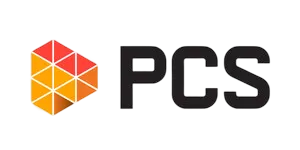This is the conversation no one wants to have or read. Why? It’s boring.
But boring topics (like taxes) often prove to be very important. The same is true for the subject of IT policies and procedures. They exist to keep your business safe.
Can you easily answer these questions?
- What’s your IT policy on employee onboarding and setting permissions?
- What’s your IT policy on employee termination and blocking BYOD access?
- What’s your IT policy on incident response?
As Anthony mentioned in our TuesdayTechTip video, in the realm of IT, policies are some of the first things we review. When PCS performs an IT consultation with businesses, we frequently encounter permissions that are set too broadly, instances where employees have full access to financial information, and even areas without IT policies.
Before we discuss the most critical business IT Policies and Procedures, take a second to have a big sip of whatever caffeinated beverage keeps you running. Ready? Good. Let’s dig in.
Critical Business Tech Policies for Small Business
- Acceptable Use Policy: An AUP outlines the acceptable ways employees can use technology resources, such as computers, networks, and internet access. It should address activities like personal use of devices, social media guidelines, and downloading software.
- Information Security Policy: This policy focuses on safeguarding internal and external sensitive information. It includes measures like password management, data encryption, access controls, and guidelines for handling confidential data.
- Incident Response Plan: An incident response plan defines the steps to be taken in case of a cybersecurity breach or any other IT-related incident. It should include clear roles and responsibilities, communication protocols, and a post-incident review process.
- Data Backup and Recovery Policy: This policy outlines regular data backups, storage, and recovery procedures. It ensures that critical data can be restored in case of system failures, data loss, or disasters.
- Bring Your Own Device (BYOD) Policy: With the rising trend of BYOD in workplaces, this policy addresses the use of personal devices for work-related activities, ensuring security and privacy concerns are met. A crucial management component within BYOD is Mobile Device Management (MDM).
- Software and Hardware Acquisition Policy: This policy governs the process of acquiring, installing, and maintaining software and hardware, ensuring that only authorized and licensed resources are used.
We recommend reviewing each of these policies within your company to ensure they’re monitored for compliance. Remember, this is the framework that will guide your employees, stakeholders, and contractors on the responsible handling of data and technology. Contact PCS for a Technology Consultation.

